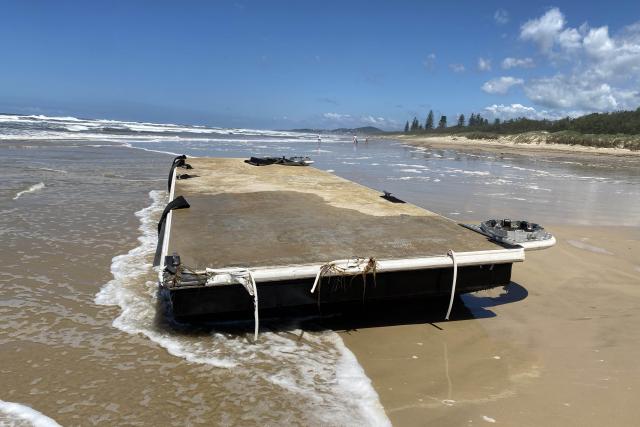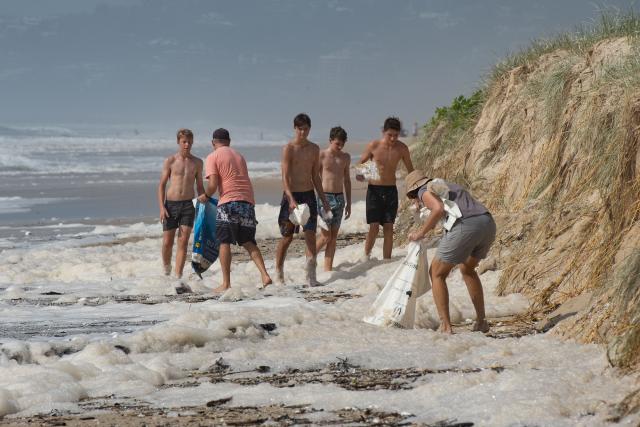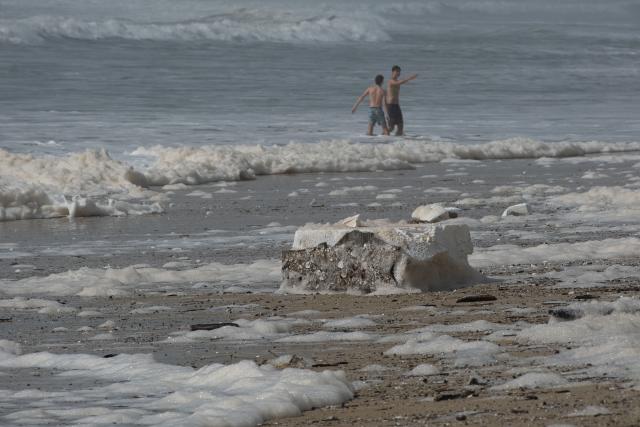A four-hour Polystyrene Round Table hosted in July by Noosa Council to discuss the impacts and removal of polystyrene debris on Noosa’s beaches has led to a raft of recommendations to improve disaster response, clean up actions and pontoon design.
During the February floods 18 pontoons came loose from Brisbane moorings, travelled to Noosa beaches where they broke up in the rough seas and waves, littering the beaches with polystyrene, along with other flood debris.
Much of the material has since been collected by council and community members but small, scattered pockets of polystyrene beads, buried in the sand, continue to be exposed by wind and wave erosion, and need regular, small clean-ups with funding to do so sought from Queensland Reconstruction Authority.
The roundtable discussion brought together stakeholders from government, environment and community.
At its Planning and Environment Committee meeting on Tuesday council officers talked about the outcomes from the discussion and plans for future action.
They raised the need for council to improve information availability and accuracy to the community during a disaster as well as better incorporating environmental considerations into disaster operations, developing regional and local relationships and disaster response processes, better collaborating with community organisations and developing coastal clean-up resource hubs.
Discussions with State Government on reviewing pontoon regulation, identification, construction, and tethering standards in response to expected climate change impacts was also strongly supported.
An officer said council was in discussions with Sunshine Coast Council about their successful Clean up for hatchlings project and engaging other coastal clean up groups, with the idea council should take stronger role in supporting groups already working in the space and assisting with coordination between them.
The officer said council would always be challenged by resources on the ground to respond to an incident but the event had highlighted the interest in the community to assist and the need for a more coordinated response.
Council said there were plans to create a case study report and develop a video on the incident to be available online to assist others who find themselves in similar situations.
Over-arching agreement was reached in the roundtable discussion that extreme weather, marine debris events and other environmental disasters are likely to be more common as the impacts of climate change increase.
Officers said the roundtable recommendations were being circulated to participants for consideration for future implementation by the various agencies and organisations, while discussions to advance future collaboration efforts were already happening and financial implications for council would be considered as recommendations were further assessed for implementation.
Noosa Environment Strategy 2019 identifies the social and environmental values of coastal ecosystems and their requirement to be protected and enhanced. Noosa Coastal Hazards Adaptation Plan 2021 describes coastal hazard risks from extreme weather and requires appropriate, effective disaster responses that incorporate expected climate change. The Noosa Liveability Study 2022 identifies Noosa’s coastal landscapes and beaches as an essential part of the local ‘look and feel’ and liveability that could be badly affected by future marine debris and coastal environmental disasters.









